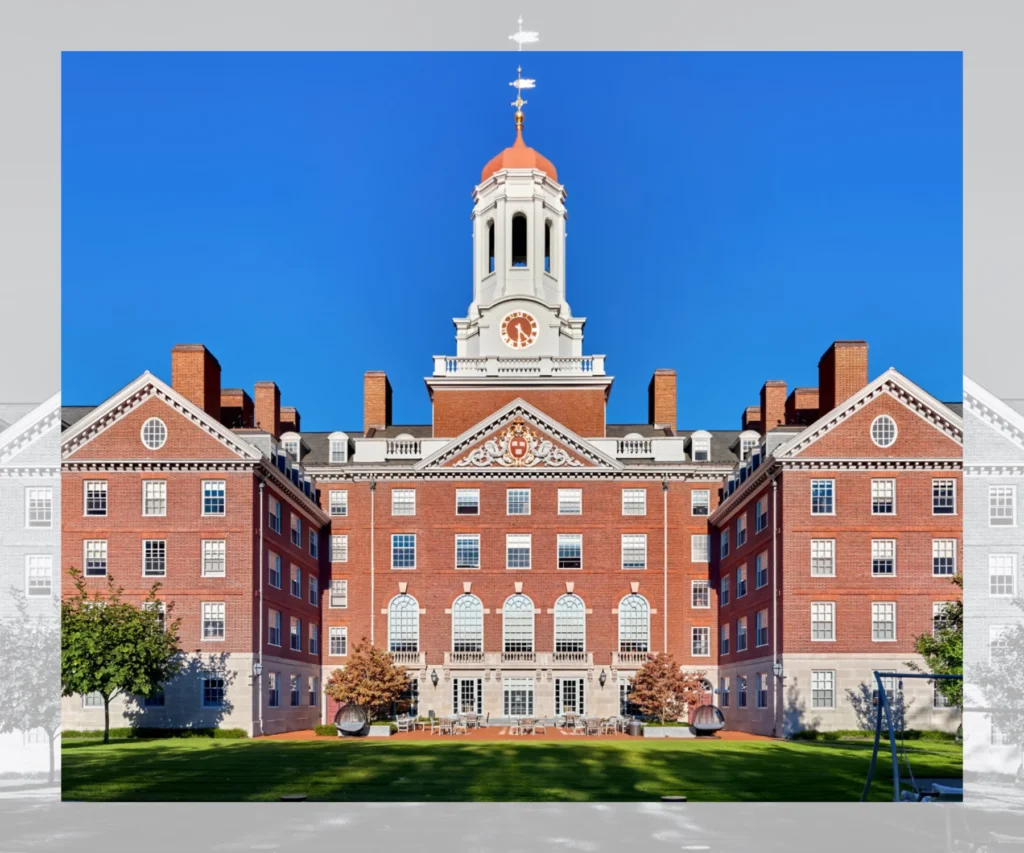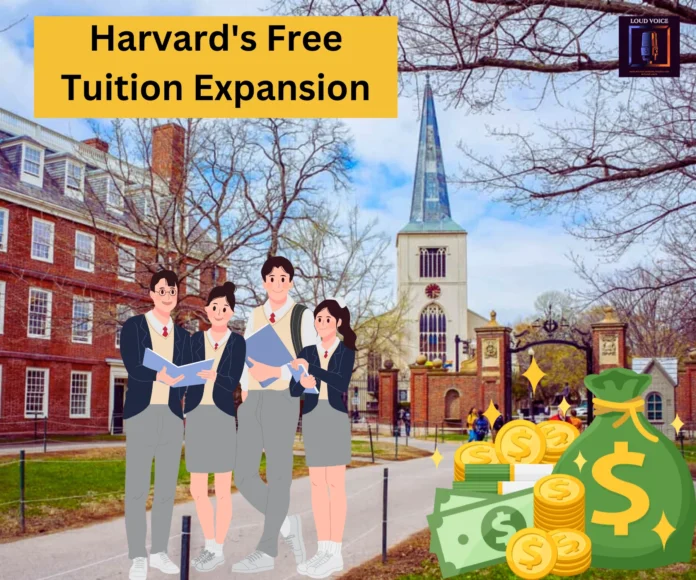Harvard’s Free Tuition Expansion: A Historic Commitment to Affordability
Harvard University has unveiled a transformative expansion of its financial aid program, ensuring that students from families earning $100,000 or less can attend Harvard College entirely free of charge. This initiative, set to launch in the 2025-26 academic year, represents a significant shift in making elite education more accessible to a broader range of students.
This move is designed to alleviate the financial stress often associated with attending a prestigious university. The program extends beyond tuition coverage, ensuring that qualifying students receive comprehensive financial assistance. Harvard will also cover essential expenses, including food, housing, health insurance, and travel costs. To further support students in their transition to college life, each qualifying individual will receive a $2,000 start-up grant in their first year, helping cover initial expenses such as books, supplies, and personal needs. Additionally, a $2,000 launch grant will be provided during their junior year to support their transition beyond Harvard, whether into careers, internships, or further academic pursuits.
Expanding Opportunities for More Families
Harvard’s financial aid program does not stop at families earning $100,000 or less. Students from households with incomes up to $200,000 will also receive substantial financial support. While full tuition will be covered, additional aid will be available to assist with other billed expenses based on a family’s specific financial situation. The university has emphasized that even families earning more than $200,000 could qualify for assistance, depending on unique financial circumstances such as multiple dependents in college or high regional costs of living.
By expanding eligibility, Harvard estimates that nearly 86% of U.S. families will qualify for some form of financial aid. This initiative underscores Harvard’s commitment to fostering a diverse academic community, ensuring that the brightest minds from all socioeconomic backgrounds have equal access to world-class education. Providing financial support at such a large scale enhances educational equity and allows students to focus on academic and extracurricular growth without the constant burden of financial uncertainty.
Harvard University: A Legacy of Excellence

Founded in 1636, Harvard University stands as one of the most prestigious institutions of higher education in the world. With a legacy spanning nearly four centuries, Harvard has been at the forefront of academic excellence, groundbreaking research, and thought leadership. The university’s commitment to knowledge, innovation, and inclusivity has attracted students and scholars from around the globe, making it a beacon of intellectual progress.
Harvard’s influence extends beyond the walls of its Cambridge campus, shaping policies, industries, and societies worldwide. With a diverse faculty and student body, Harvard continues to uphold its mission of creating leaders who make meaningful contributions to their fields. Its vast network of alumni further amplifies its global impact, as Harvard graduates often go on to shape industries, governments, and social movements.
Notable Harvard Alumni: Leaders Across Fields
Harvard University has produced some of the most influential figures in history, spanning politics, business, science, and the arts. Among its distinguished alumni are eight U.S. presidents, including John F. Kennedy, Franklin D. Roosevelt, and Barack Obama. In the realm of business, Harvard has educated visionaries such as Bill Gates, Mark Zuckerberg, and Michael Bloomberg, all of whom have transformed the technology and finance sectors.

The university has also been a training ground for Nobel laureates, Supreme Court justices, and Pulitzer Prize winners. From the scientific breakthroughs of physicist Richard Feynman to the literary contributions of T.S. Eliot, Harvard’s alumni continue to shape the world in profound ways. This extensive legacy of excellence reinforces the university’s dedication to fostering the next generation of leaders and innovators.
A Legacy of Financial Aid Reform
This expansion builds upon Harvard’s long history of increasing accessibility through financial aid. The Harvard Financial Aid Initiative, launched in 2004, initially provided full coverage for students from families earning $40,000 or less. Over the years, Harvard has continuously increased the income threshold, reaching $60,000 in 2006, $85,000 in 2023, and now $100,000 in 2025.
Beyond direct tuition support, Harvard has been a pioneer in financial aid reform. In 2007, the university eliminated loans from its financial aid packages, replacing them entirely with grants to minimize student debt. This decision was made to ensure that students graduate without the burden of loan repayment, allowing them to pursue career and academic opportunities without financial limitations. Additionally, Harvard no longer considers home equity when calculating a family’s financial contribution, further reducing barriers to receiving aid.
Harvard has invested over $3.6 billion in undergraduate financial aid to date, demonstrating a long-term commitment to financial inclusivity. With an annual financial aid budget of $275 million for the 2025-26 academic year, more than half of Harvard’s undergraduate students will receive financial assistance. On average, families of students receiving aid paid just $15,700 for the 2023-24 academic year, a fraction of the total cost of attendance.
The Broader Impact on Higher Education
Harvard’s decision to expand its financial aid program may serve as a catalyst for other elite universities to reconsider their own financial aid policies. As one of the world’s most prestigious institutions, Harvard’s influence in higher education is significant. Other colleges and universities, particularly those with large endowments, may follow suit and implement similar policies to reduce financial barriers for students from middle-income families.

Affordability in higher education has been a topic of national debate for years, with concerns about student debt and accessibility dominating discussions about the future of academia. By setting a new precedent for financial aid policies, Harvard is taking a leadership role in shaping a more inclusive and equitable higher education landscape.
Strengthening the Harvard Community
By alleviating financial barriers, Harvard aims to attract and retain the most talented students, regardless of economic background. University leaders have emphasized that broadening access to financial aid not only benefits individual students but also strengthens the entire Harvard community by fostering a more diverse, dynamic, and enriched learning environment.
With this historic expansion, Harvard continues to set an example for institutions worldwide, demonstrating that a top-tier education should not be restricted by financial means. The initiative reaffirms the university’s commitment to merit-based accessibility, ensuring that every admitted student can fully engage in Harvard’s academic and social experiences without financial stress.
Looking Ahead: The Future of Financial Aid
As Harvard implements these changes, other institutions will likely monitor the impact of this initiative on enrollment patterns, student success rates, and overall academic performance. The university’s financial aid staff remains committed to working individually with students and families to ensure that financial support is tailored to each student’s unique needs. This level of personalized assistance further strengthens Harvard’s mission to provide an inclusive and supportive academic environment.
In the coming years, discussions surrounding financial aid and affordability in higher education will continue to evolve. Harvard’s expansion marks a pivotal moment in this ongoing conversation, reinforcing the importance of making education accessible to all students, regardless of socioeconomic status. As other universities take note, the ripple effect of this initiative could lead to widespread changes in financial aid policies across the higher education sector.
This initiative is a monumental step toward creating a more inclusive and equitable education system. As universities across the nation take note of Harvard’s groundbreaking financial aid expansion, it could inspire broader systemic changes, ensuring that financial constraints do not limit academic potential. With this commitment, Harvard is not only opening its doors to more students but also setting a new standard for educational accessibility worldwide.


